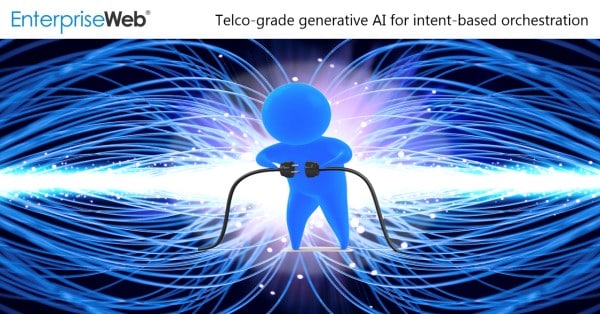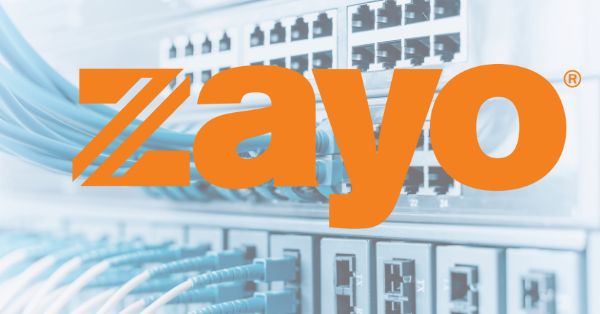The telecom virtualization and automation pioneer partners with vector-native database provider KX to enable next generation AI-powered telecom operations
New York, USA, May 16, 2023 EnterpriseWeb (https://enterpriseweb.com/), a New York based software company that offers an application platform for digital business transformation, announced that it will premiere the first telco-grade demonstration of generative AI for network service orchestration today at Informa’s Big 5G event in Austin, Texas. The company, which ran the telecom industry’s first Network Function Virtualization proof-of-concept in 2013 and is known for its advanced automation capabilities, partnered with KX (https://kx.com/), provider of the world’s fastest time series database and real time analytics engine, to enable next generation AI-powered Telecom operations.
Generative AI has captured the public’s imagination with its human-centered interfaces (text and voice) and its advanced conversational capabilities, which make the power of artificial intelligence accessible to non-technical people. There is a race already underway to extend generative AI use-cases and capabilities to virtually all aspects of human endeavor, including the large market for business productivity and automation solutions.
Background: While generative AI has already spawned much experimentation, most demonstrations are focused on the technology’s ability to generate outputs – text, music, art, and even code templates – as guided by human prompts. These outputs, while impressive in their own right, are generally understood to be first drafts, often with varying degree of errors and omissions, such as an entry-level assistant might provide. Early generative AI automation prototypes tend to demonstrate simple if-this-then-that (IFTTT) style capabilities without reference to security, governance and compliance concerns. Complex enterprise and industrial systems have a far higher standard to safely automate processes with complex use-case requirements, organizational policies and industry regulations, which require deep domain-specific knowledge and rules.
EnterpriseWeb’s no-code platform was designed specifically to allow software engineers to rapidly design, deploy and manage highly-dynamic, data-driven applications. It features a graph knowledge base, which provides domain context, configuration and control for stateless middleware functions providing intelligent back-end services for developers. Now, with the advent of generative AI the company can expose its declarative interfaces to developers and AI for collaborative design, deployment and management of next generation business and infrastructure applications. EnterpriseWeb’s integrated best-of-breed solution with KX advances the state-of-the-art by providing the necessary domain-specific context and constraints to enable telco-grade generative AI for network service orchestration.
EnterpriseWeb chose The Big 5G Event to premier the solution as it is the leading annual gathering for North American Telecom executives responsible for 5G, cloud and edge automation strategies. The company is exhibiting at booth 502 and is giving a talk on Wednesday, May 17th.
The demo, now available on YouTube, presents a developer interactively composing a network service in an informal conversation with generative AI. It features Microsoft Corporation’s Jarvis project, which provides a natural language programming interface and uses a foundational model from OpenAI. KX’s vector-native, time-series database, acts as an intermediary between generative AI and EnterpriseWeb’s automation capabilities. This purposeful design provides an architectural separation-of-concerns between the two technologies, which serves as an important security and IP boundary. As the intermediary, KX translates between the developer’s unstructured natural language requests and the structured, rules-based logic of EnterpriseWeb’s graph domain model. EnterpriseWeb interprets the queries and commands using the graph to identify relevant relationships to known business concepts, types and policies. It allows the developer to express their intent in an informal short-hand, with the platform runtime handling the implementation complexity.
Once the developer has configured the network service, they can place an order directly through EnterpriseWeb or a front-end like Microsoft’s PowerApps. In either case, EnterpriseWeb provides the back-end to automate the deployment and configuration of the service. The platform’s run-time takes responsibility for enforcing system controls, IT governance and business compliance, which represent strong rules-based guardrails for safe systems behavior. Post-instantiation, KX observes the network service and reports events to EnterpriseWeb for closed-loop autonomic management (i.e., self-scaling, self-healing, self-optimizing).
Together, EnterpriseWeb and KX are providing an integrated generative AI automation solution for next generation AI-powered Telecom operations, which is now available for commercial trials. The solution itself is generic; Telecom is the first domain being demonstrated. EnterpriseWeb and KX are working with partners to develop and deliver generative AI automation across industry verticals.
About KX
Our mission is to accelerate the speed of data and AI-driven business innovation enabling customers to transform into real-time, intelligent enterprises. Built for the most demanding data environments, our Data Timehouse platform is trusted by the world’s top investment banks and hedge funds, and leading companies in the life and health sciences, semiconductor, telecommunications, and manufacturing industries. At the heart of our technology is the kdb+ time series database and analytics engine, independently benchmarked as the fastest on the market. It can process and analyze time series and historical data at unmatched speed and scale, empowering developers, data scientists, and data engineers to build high-performance data-driven applications and turbo-charge their favorite analytics tools in the cloud, on-premise, or at the edge. Ultimately, our technology enables the discovery of richer, actionable insights for faster decision making which drives competitive advantage and transformative growth for our customers. KX operates from more than 15 offices across North America, Europe and Asia Pacific. For more information visit www.kx.com or contact: pr@kx.com.
About EnterpriseWeb
EnterpriseWeb offers the first industrial-grade, no-code application platform for software engineers. The platform eliminates tedious development, integration and configuration tasks to accelerate service delivery and automate lifecycle management. It allows the rapid modelling of event-driven, end-to-end processes that flexibly connect across business silos, cloud hosts and eco-system partners. The dynamic and declarative platform integrates with AI/ML to enable next generation business and infrastructure applications with closed-loop automation. The company is a pioneer in Telecom virtualization and automation. It led the first ETSI NFV Proof-of-Concept, “CloudNFV”, which demonstrated the convergence of IT and networking, and more recently ran an award-winning Intel 5G RAN testbed. For more information visit www.enterpriseweb.com, or contact: info@enterpriseweb.com.
“We are excited, working in conjunction with our partner KX, to premiere another industry-first, telco-grade generative AI for intent-based orchestration, which will transform Telecom operations.” Dave Duggal, founder and CEO, EnterpriseWeb


































